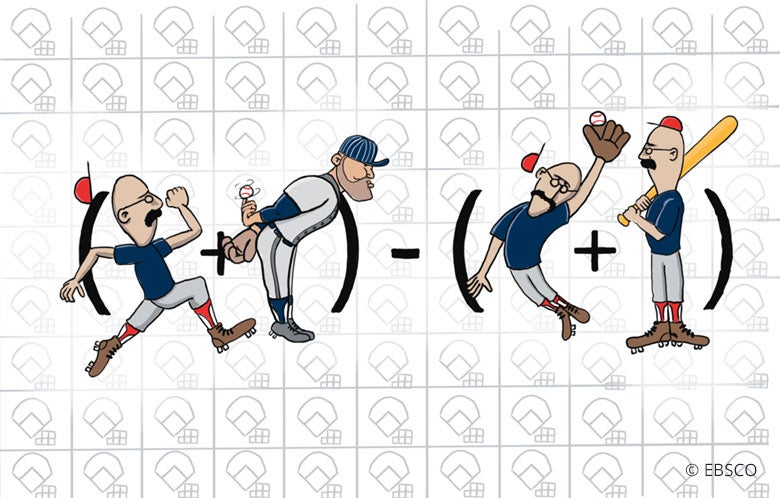In many sports, new analytics are used to pinpoint the crucial factors that underlie performance and ultimately, the outcome of the game. In baseball, modern statistics such as wins above replacement (the difference between the number of wins a player contributes versus that of a freely available replacement) are now often given more weight than the standard measures of batting average (fraction of hits per plate appearances) and earned run average (runs—not due to errors— allowed per nine innings). Major League teams now employ over 100 analysts who quantify many aspects of the game in order to better understand it. In fact, math has become so common that one team analyst said, “Frankly, it’s easier to list what math isn’t used for than what it is.”
Radar and cameras in every Major League stadium track the ball and the movements of players, generating terabytes of data for each game. Baseball analysts use this output to mathematically model the game and find the keys to increasing runs scored and decreasing runs allowed. The methodical analysis by professionals and fans alike has led to revelations that have changed decision making on the field and off (when players are signed or traded). For example, it’s been discovered that a baserunner has a more negative effect on a batter than on the defense. Purists may wonder if modern analysis is better than the old ways, but as they say in the Virtual Reality batting cages at baseball stadiums, “You be the judge.”
In fact, math has become so common that one team analyst said, “Frankly, it’s easier to list what math isn’t used for than what it is."
In fact, math has become so common that one team analyst said, “Frankly, it’s easier to list what math isn’t used for than what it is."
For more information on these applications, check out The Book: Playing the Percentages in Baseball, Tango, Lichtman, and Dolphin, 2013.
This post was first published in Mathematical Moments, a program by the American Mathematical Society that promotes appreciation and understanding of the role that mathematics plays in science, nature, technology and human culture. The Mathematical Moments site features downloadable posters for classroom or office use, as well as a recurring podcast.
MathSciNet is published by the American Mathematical Society and available on the EBSCOhost and EBSCO Discovery Service, which provide the ability to search indexed fields such as author, institution and MSC Primary and Secondary Classifications, and allow librarians, students and faculty the opportunity to easily link to related full text in the library’s collection.
